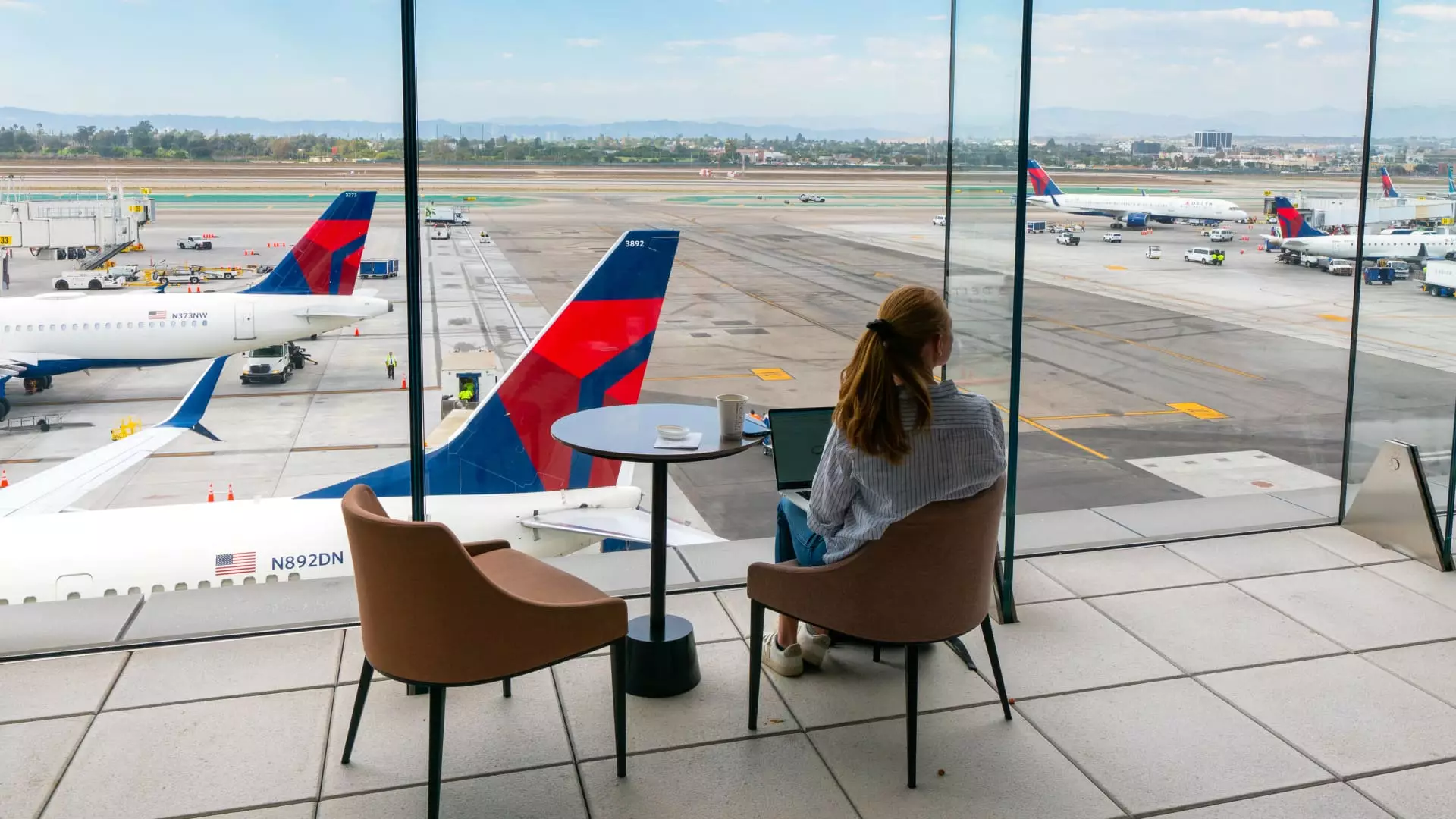The airline industry has often been seen as a barometer for the economic climate, reflecting broader trends in consumer behavior and corporate expenditures. Recent developments reveal a concerning outlook for numerous airlines, notably Delta and Frontier, which have retracted their expectations for 2025. This shift is not just an isolated incident, but rather a reaction to a grim economic forecast characterized by sluggish consumer demand and a pervasive sense of uncertainty. The elevated level of apprehension, particularly in the travel sector, recalibrates the industry’s trajectory, moving it into defensive tactics as concerns mount.
The roots of this situation are multifaceted. While direct attribution can be made to macroeconomic factors such as rising inflation, supply chain issues, and geopolitical tensions, it is essential to recognize how government actions play a pivotal role. For instance, policies stemming from former President Trump’s trade war have had a lasting impact, reducing cross-border traffic and weakening corporate travel. The fallout from these political decisions can be felt in diminished spending by consumers who once viewed travel as an essential indulgence, not a luxury.
Consumer Sentiment: The New Economic Epidemic
Despite overcoming significant hurdles during the pandemic, consumer confidence has taken a nosedive—a sentiment reflected in the latest University of Michigan survey. This decline in projected consumer spending signals a fundamental shift in priorities; discretionary expenses like dining out and traveling are often the first to go when financial stability is questioned. As Delta CEO Ed Bastian pointed out, the industry is pivoting towards a defensive posture, reminiscent of behavior leading up to a recession.
In times of heightened uncertainty, consumers become more contemplative and cautious about their spending. The airline industry’s reliance on bookings—particularly those from corporate clients—has become increasingly fragile. The hesitance of firms to spend on travel contributes to a broader economic malaise. With both corporate travel and general consumer outlook shrinking, airlines have started recalibrating their strategies to focus on premium segments that may still have the means to indulge.
Targeting the Wealthy: The Price of Luxury Travel
In response to these shifts, airlines are adapting by seeking to cater to affluent travelers, who are less likely to shy away from splurging on travel experiences. Airlines are currently touting their premium offerings, such as spacious cabins and high-end lounges, a bold yet strategic move aimed at wealthier clientele who prioritize comfort and exclusivity. With Delta and Spirit Airlines accentuating their luxury travel options, it’s clear they are banking on a customer base that remains willing to spend on “nice-to-have” travel experiences irrespective of broader economic concerns.
However, this strategy raises questions about sustainability. Will these premium offerings attract enough travelers to offset the decline in the mainstream market? As airlines inflate the allure of lavish experiences, they risk alienating a significant portion of their customer base, who travel for necessity rather than luxury. By changing their emphasis, airlines run the risk of becoming reliant on a demographic that may not provide stable revenue, especially amid fluctuating economic conditions.
The International Travel Conundrum
Further complicating matters are drawbacks within international travel. Observations from airlines indicate a decline in demand for flights to and from Canada and other countries, exacerbating the already fragile landscape of international tourism. The effects of these contemporary economic concerns are stark: non-citizen arrivals in the U.S. fell nearly 13% from 2019, echoing doubts about the viability of cross-border travel in the near future. As the travel sector inches toward recovery, questions remain about whether the current trajectory can sustain growth without robust international arrivals.
This situation poses a challenging paradox for airlines: while seeking to enhance their premium offerings, they are simultaneously confronted with declining availability and interest due to federal regulations and international market pressures. As the industry grapples with these conflicting signals, it becomes clear that management strategies must evolve, ensuring that they maintain competitive viability in this ever-changing landscape.
Future Implications: Are Lower Fares on the Horizon?
The heightened competition for market share might lead to decreased airfares, particularly for international destinations suffering from weak demand. As airlines confront the pressing need to fill seats, fare sales and discounts for travel are becoming increasingly common, enticing growth in traveler numbers while simultaneously posing questions about profitability. This could ultimately redefine pricing structures within the industry.
The allure of cheaper flights might reinvigorate travel for some, yet the sustainability of such a pricing strategy is fraught with risk. As airlines maneuver through these turbulent waters, they will require a nuanced approach to balance luxury offerings with practical pricing frameworks that can accommodate the changing economic tide. The juxtaposition of economic concerns with high-end travel desires creates an intricate dance that will determine the industry’s resilience in the months to come.

